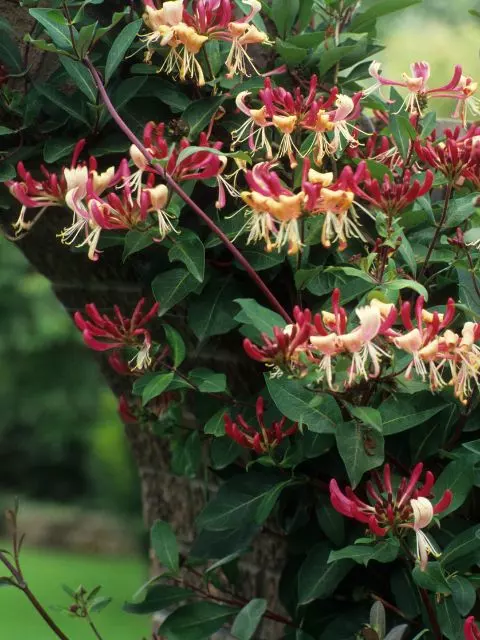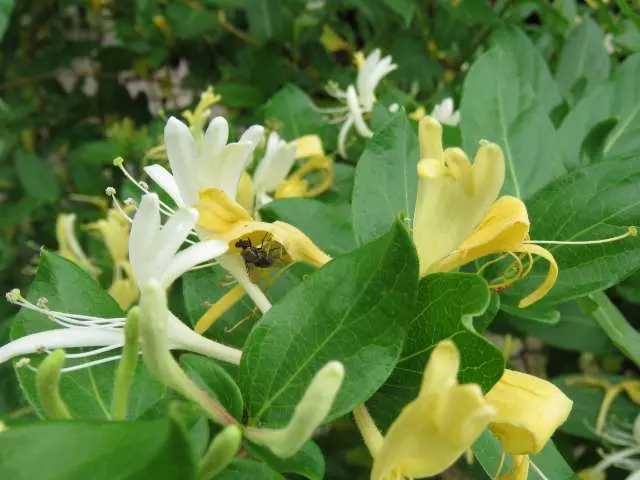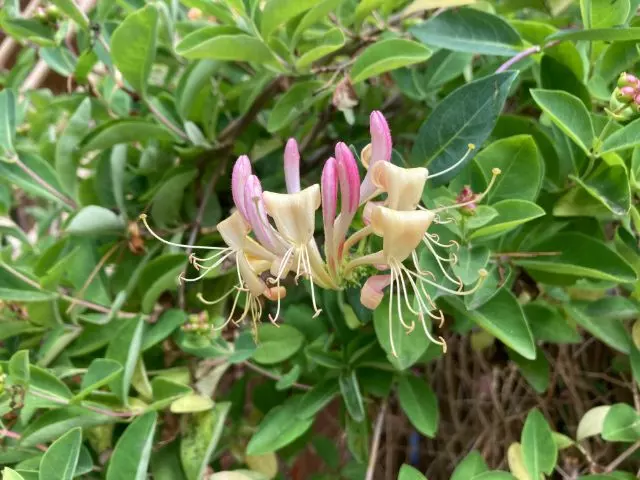Honeysuckle is a beautiful, low-maintenance plant with beautiful flowers and fragrance. Pollinating insects and hummingbirds are attracted to honeysuckle flowers and further embellish the garden. Like all plants, honeysuckle needs nutrients to bloom abundantly. In this article, I will explain everything about choosing the best honeysuckle fertilizer according to your soil and plant age. I will also detail when and how to fertilize honeysuckle and tips for applying fertilizer correctly.
There are more than 180 varieties of honeysuckle. What I love most about this plant is the fragrance and the number of pollinating insects it attracts to the garden. I keep honeysuckle near my vegetable garden so insects can better pollinate all my plants yearly. Continue reading to learn all about honeysuckle fertilizer.
Table of Contents
What Is the Best Fertilizer for Honeysuckle
What Is the Best Fertilizer for Honeysuckle? In the market, you will find an infinity of fertilizers, but not all are ideal for honeysuckle. On fertilizer packages, you will see three numbers, such as 2-10-10. These are the NPK values. NPK stands for nitrogen, phosphorus, and potassium.
Nitrogen (N): Nitrogen is essential for developing leaves and stems. It plays a crucial role in forming chlorophyll, the pigment responsible for photosynthesis. A nitrogen deficiency can lead to stunted growth and yellowing of leaves.
Phosphorus (P): Phosphorus is essential for root development, flowering, and fruiting. It helps plants convert energy from the sun into usable chemical energy. A lack of phosphorus can result in poor root development and reduced flower and fruit production.
Potassium (K): Potassium is involved in many physiological processes within plants, including water uptake, disease resistance, and overall plant health. Potassium deficiency can lead to weak stems, poor fruit quality, and increased disease susceptibility.
Each NPK number indicates the percentage of nutrients in the product. For example, if the honeysuckle fertilizer label says 2-10-10, it contains 2% nitrogen, 10% phosphorus, and 10% potassium. The remainder are other minerals and nutrients that honeysuckle needs, such as iron and calcium, but in smaller amounts.
Honeysuckle grows and blooms very well in nutrient-rich soils. Adding fertilizer is not always necessary if the soil is sufficiently nutritious. Of course, adding fertilizer is a good option for honeysuckle to grow and bloom exponentially.
NPK fertilizers 0-10-10 or 2-10-10-10 are an excellent choice to feed your honeysuckle. In the following paragraphs, I will explain in detail when using each of these two fertilizers is convenient.

Best Fertilizer for Honeysuckle
You should always use NPK fertilizers with low nitrogen content for honeysuckle to encourage flowering and not foliage growth. As mentioned earlier, if the soil is rich in nutrients, you should not fertilize your honeysuckle too often. Some species of honeysuckle take up to 3 years to give their first bloom but keep in mind that they are plants that live up to 20 years.
I recommend using an NPK 2-10-10 fertilizer to promote development and growth for honeysuckle in soil with few nutrients, as it is a young plant. With a fertilizer with that amount of nutrients, your honeysuckle will give a spectacular bloom.
If your honeysuckle is an adult plant and is in soil with good nutrients, it is best to use an NPK 0-10-10 fertilizer. This way, the honeysuckle will absorb the nitrogen naturally found in the soil, and you will provide extra potassium and phosphorus to encourage flowering.
Either of these two fertilizers will help your honeysuckle grow and develop properly. In addition, these nutrients will promote a beautiful bloom on your honeysuckle. Properly fertilizing your honeysuckle will prevent yellow leaves due to nutritional deficiency. Learn more about yellow leaves on honeysuckle.
Use fertilizer according to the manufacturer’s instructions. Over-fertilization can harm the plant and may lead to excessive vegetative growth at the expense of flowering.
When to Fertilize Honeysuckle
When to Fertilize Honeysuckle? Apply honeysuckle fertilizer in the spring, just before the start of the growing season. You can also provide a light application in early summer if necessary. Avoid fertilizing in late summer or fall to prevent stimulating new growth susceptible to winter damage.
I recommend before fertilizing your honeysuckle, measure the soil pH. Honeysuckle needs a pH between 5.5 and 8. With the correct pH, the honeysuckle can properly absorb all the nutrients. If your soil is too acidic (low pH), you can raise the pH by applying lime. On the other hand, if your soil is too alkaline (high pH), you can reduce the pH by using sulfur or organic matter.

How to Fertilize Honeysuckle
How to Fertilize Honeysuckle? Depending on your honeysuckle fertilizer (liquid or granular), the application will be slightly different. You should always read the manufacturer’s instructions because they vary quite a bit depending on the brand and type of fertilizer.
If using granular fertilizer, evenly distribute the calculated amount around the base of the honeysuckle plant, keeping it a few inches away from the stem to avoid direct contact. If using a liquid fertilizer, follow the manufacturer’s instructions for application.
After applying the fertilizer, water the area thoroughly (only for granular fertilizer). That helps dissolve and activate the fertilizer, ensuring the nutrients reach the plant’s root zone. Watering also helps prevent fertilizer burn by flushing any excess salts from the soil.
How Often to Fertilize Honeysuckle
How Often to Fertilize Honeysuckle? The frequency of fertilizing honeysuckle plants can vary depending on several factors, including the type of fertilizer used, the soil quality, and the specific needs of the honeysuckle variety. Generally, fertilizing honeysuckle during spring and summer is only necessary. For many honeysuckle varieties, a single annual application of fertilizer in the spring is sufficient to support healthy growth and flowering.

Final Conclusions
As you can see, there are a lot of details behind choosing the best honeysuckle fertilizer. Gardeners should choose the right fertilizer according to their soil and honeysuckle plant age.
Applying fertilizer to honeysuckle will encourage flowering and plant development. Fertilizing once a year is usually enough for your plant unless the soil is very low in nutrients. A nutrient deficiency in the plant can cause many problems, so it is crucial to prevent it.
Always follow the manufacturer’s instructions for proper application, no matter what kind of fertilizer you use on your honeysuckle. Too much fertilizer will cause damage to the roots of the plant.
I hope you find this article helpful on choosing honeysuckle fertilizer and having a beautiful bloom.



